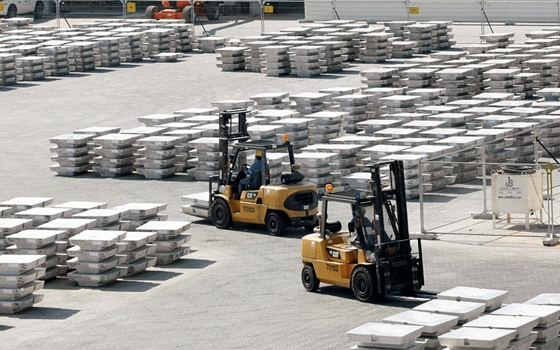The volume of aluminum production in the Gulf region is expected to increase to five million tons by 2015, accounting for 17.5 per cent of the total global output, compared with 3.7 million tons in 2012 or 11 per cent of the total world production.
Gulf investments in the aluminum sector are expected to reach $55 billion by 2020, compared with $30 billion in 2011, thanks to expansion of smelters and new projects in the region.
Globalization, market dynamics, environment and energy prices are redrawing the world aluminum industry map, with the Middle East in general and the Arabian Gulf countries in particular emerging as the potential winners of the new business paradigm.
Aluminum industry experts say that the world will go through a fundamental transformation in all walks of life during the next 50 years, including where we live, what we consume, how we travel, and what we eat. These changes will fuel the demand for aluminum products worldwide and open the doors for those who are able to innovate and come up with what the world needs, he said.
A study by Brookings Institute estimates that by 2020 more than three billion people will join the middle class, inclined to spend more on food and beverages, housing, electronics and travel, all of which are aluminum-guzzling industries.
The Aluminum Manufacturers and Producers Association expects the aluminum world demand to grow 6.5 per cent annually which will see doubling of the production and consumption from 35 million tons in 2010 to more than 70 million tons by 2020.
Aluminum is among the industries that are greatly affected by globalization forces, which geographically redistributes production and consumption centers to benefit from cheap labor, energy and shipping costs, in addition to proximity to bauxite mines and less stringent environmental roles. There is also a shift towards lighter and stronger materials in many industries.
Parallel to these changes, recycling is another mega trend shaping the industry, not only because it is an integral part of the industry’s environmental policy, but also due to huge economic savings that recycling brings.
The global recycling industry is estimated to be in excess of $200 billion in annual revenues, of which $75 billion is generated by the US.
According to Aluminum International Institute, producing one kilogram of aluminum from bauxite requires 45 KWH of electricity, compared with only 2.8 KWH using recycled aluminum, almost a 90 per cent saving in energy costs.
A study by Frost &Sullivan that looked into the future of Middle East aluminum industry until 2020, suggests the region’s share of aluminum world production to rise to more than 15 per cent by 2015, up from 6.2 per cent in 2007.
Despite the increase in Middle East’s strategic importance in the aluminum production matrix, the biggest chunk of the region’s production remains pure aluminum for export. The region has a long way to go in moving away from exporting pure aluminum to products, similarly to what happened when it moved from exporting crude oil to exporting petrochemicals.
According to the study, Middle East’s aluminum exports will increase from 76 per cent of all the production in 2013 to 85 per cent by 2020.
If the Middle East has to benefit from the new paradigm, experts say companies need to enter into partnerships with bauxite mine owners to hedge themselves against price fluctuations in the free market and the disruption of deliveries due to political instability in bauxite-exporting countries.
Aluminum companies should also realize the urgency of increasing their research and development (R&D) budgets to develop more effective production techniques, reduce costs, extending longevity of the bauxite mines lifespan and innovating new high-value products, especially in the aerospace and consumer electronic sectors.
ifpinfo
23 September






















































